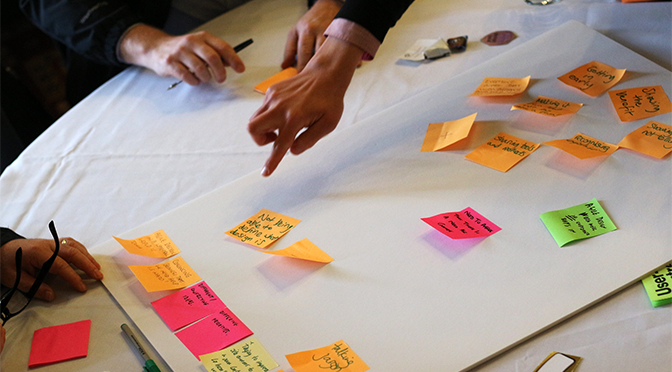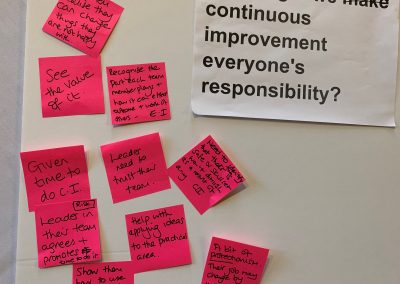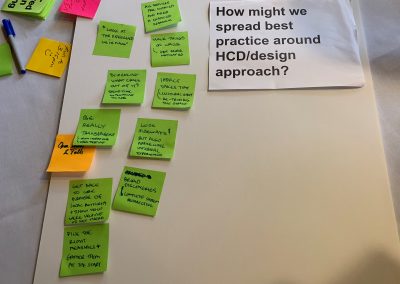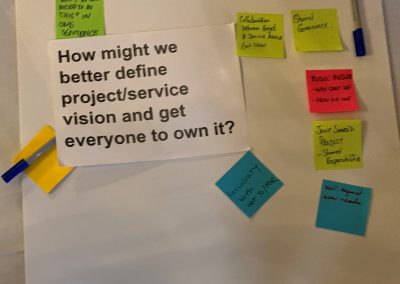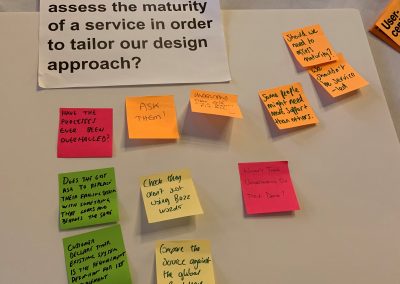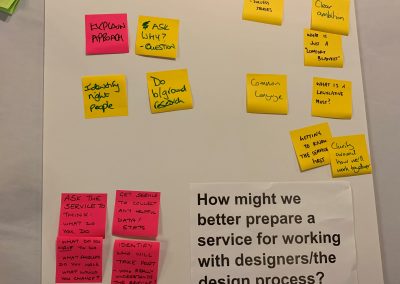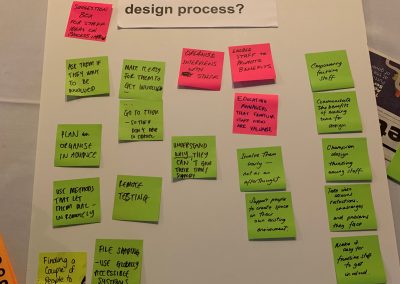As a council our uppermost value is to keep the people of Stockport at the heart of what we do, so designing our services around user need is central to how we work. When we were invited to run a workshop about human centered service design at the first Local Gov Design Day we welcomed the opportunity to share our experience and learn from other local authorities.
We’ve been building our team of service designers, UX designers and content designers for some time, but you don’t have to have the word ‘design’ in your job title to be focussed on what customers and business users think of the services or products you provide for them. The day was all about sharing experiences of how human centered design and design-thinking is everyone’s responsibility
What works for designers can also work for services
In Digital by Design we’ve found using an adaptation of the Design Council’s double diamond approach really helps us work out where services are, what customers think and test out some solutions to help them improve. In the first large diamond we try to avoid jumping to conclusions and just listen, look and discover what people think about the service, including those using it and those delivering it, and understand common issues experienced as well as possible opportunities.
We then narrow these thoughts in the ‘define’ phase before broadening out again to explore, design and test possible solutions. Once we’ve settled on what might work, we enter a delivery phase. That could just as easily be delivering a new process, or a proposed new office layout, for example, as it is about developing a technical product.
We’ve added an additional mini diamond at the front to help us prioritise the right pieces of work to take further and included a circle at the end in recognition of the importance of supporting and embedding a new product or way of working.

I really like the freedom this framework gives us to scale up or down the work depending on how large the project or improvement required is and I think it could help others, so we’re keen to share.
We know from feedback from services we’ve already worked with that they find this way of working extremely useful. It helps them see where they are on the journey to change and also think about what tools or activities they could use at different stages. But they have also told us that they don’t yet feel confident to do all this on their own.
How can we help services?
For some time we’ve been thinking of creating something that might help services and Local Gov Design Day seemed an ideal opportunity to enlist the help of other local authorities. So for our Service Design workshop we prepared a series of ‘how might we’ questions to investigate what has/hasn’t worked when engaging people with design.
Thinking about our top challenges and opportunities, how might we:
- encourage continuous improvement to be everyone’s responsibility
- spread best practice around our design approach
- better define project/service vision and get everyone to own it
- assess the maturity of a service in order to tailor our design approach
- better prepare a service for working within this design process
- create space and time for frontline staff to engage in the design process.
It was great to be part of the rich discussions these ‘how might we’s’ sparked. It was comforting to know that no one had cracked this challenge in its entirety, but we also spotted patterns and go-to methods for getting people engaged with design. Some ideas that we picked up on, that we hadn’t considered before were:
- using an office 365 sharepoint site as an ‘innovation hub’, for example, by making use of the news and videos features
- sharing tools and methods with people, but also telling them who to contact for help/as the expert
- being conscious that asking people to initiate continuous improvement in their service areas could also be asking them to design their role, or a part of their role, out of the process
- get back to basics and the core purpose of a council and build up a vision from there
- check if services are using buzz-words with nothing/no meaning behind them – this might indicate their maturity level
- translating the features of an existing system into the requirements of a new system might be an indicator of a lower design maturity
- question when things were last overhauled (processes/systems etc) to assess how ready/hungry teams are for change
This is the output
Next steps
We are busy putting together an offer for service areas. If you would be interested in getting involved or learning more about this, whether you work for Stockport Council or another local authority, please let us know what support and tools you need to help your service continuously improve.
And if you want to read more about Local Gov Design Day read the excellent blog by Essex Council’s Nicholas Ward and Bhupinder Kaur Mann.
For regular updates from the #DigitalStockport blog sign up for email alerts.

